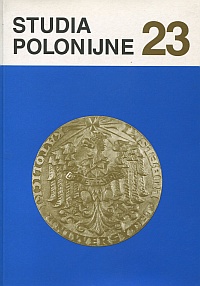The Social, Demographic, and Cultural Situation of the Poles in Soviet Lithuania, Latvia, and Estonia in the Years of 1945-1991
Main Article Content
Abstract
The paper discusses the demographic and cultural situation of Poles in Lithuania, Latvia, and Estonia in the years of 1945-1991. These are three entirely different, as regards history and culture, countries, and therefore the Poles live there in different circumstance. Until 1961 due to the deportation of the local people, the action of Russian settlement and Polish repatriation, more than half of the permanent residents were exchanged and deprived of intellectuals. Cultural, scientific, educational, and historical heritage of Poles was considerably destroyed, nationalized, or dispersed. Collective, cultural, and educational life of the Polish minority in Estonia was left entirely without its institutional forms. In Latvia it functioned at the private-underground level. Only in Lithuania, where Poles constituted a well-united community, has it survived until today.
In Latvia the Poles are the only ethnic group whose number has remained equal with the pre-war period. They were subject to profound Russification during the Soviet rule, and managed to improve their position in the second half of the 1980s. Only from 1990 onwards could Polish institutions in Estonia work again, but the majority of the small number of Poles there (3.000 in 1989) treat the Russian language as their mother tongue. Only in Lithuania had a wide range of Polish-speaking schools been established. There were also social, learned, and cultural organizations licensed by the authorities. From 1953 onwards the “Czerwony Sztandar” [The Red Banner] (today “Kurier Wileński” [The Vilnius Courier]) was issued − the only Polish daily in the USSR. The progressive Russification had reduced over the years a percentage of Poles who could speak Polish, and children who were taught in this language. It is comforting to know that the Poles in Lithuania, despite the greatest war losses among their intelligentsia, showed endurance in education at all levels and developed cultural and educational activity.

